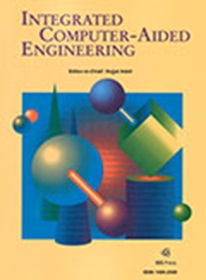An exploratory design science research on troll factories
IF 5.3
2区 计算机科学
Q1 COMPUTER SCIENCE, ARTIFICIAL INTELLIGENCE
引用次数: 0
Abstract
Private and military troll factories (facilities used to spread rumours in online social media) are currently proliferating around the world. By their very nature, they are obscure companies whose internal workings are largely unknown, apart from leaks to the press. They are even more concealed when it comes to their underlying technology. At least in a broad sense, it is believed that there are two main tasks performed by a troll factory: sowing and spreading. The first is to create and, more importantly, maintain a social network that can be used for the spreading task. It is then a wicked long-term activity, subject to all sorts of problems. As an attempt to make this perspective a little clearer, this paper uses exploratory design science research to produce artefacts that could be applied to online rumour spreading in social media. Then, as a hypothesis: it is possible to design a fully automated social media agent capable of sowing a social network on microblogging platforms. The expectation is that it will be possible to identify common opportunities and difficulties in the development of such tools, which in turn will allow an evaluation of the technology, but above all the level of automation of these facilities. The research is based on a general domain Twitter corpus with 4M+ tokens and on ChatGPT, and discusses both knowledge-based and deep learning approaches for smooth tweet generation. These explorations suggest that for the current, widespread and publicly available NLP technology, troll factories work like a call centre; i.e. humans assisted by more or less sophisticated computing tools (often called cyborgs).巨魔工厂探索性设计科学研究
私人和军事喷子工厂(用于在在线社交媒体上传播谣言的设施)目前在世界各地激增。就其本质而言,它们是默默无闻的公司,除了向媒体泄露外,其内部运作基本上是未知的。当涉及到它们的底层技术时,它们甚至更加隐蔽。至少在广义上,人们认为巨魔工厂有两项主要任务:播种和传播。首先是创建,更重要的是维护一个可以用于传播任务的社会网络。因此,这是一项邪恶的长期活动,会受到各种问题的影响。为了使这一观点更清晰一些,本文使用探索性设计科学研究来制作可应用于社交媒体在线谣言传播的人工制品。然后,作为一个假设:有可能设计一个完全自动化的社交媒体代理,能够在微博平台上播种社交网络。预期将有可能确定开发此类工具的共同机会和困难,这反过来将允许对技术进行评估,但首先是对这些设施的自动化水平进行评估。该研究基于具有4M+令牌的通用领域Twitter语料库和ChatGPT,并讨论了基于知识和深度学习的平稳tweet生成方法。这些探索表明,对于目前广泛且公开可用的NLP技术,巨魔工厂的工作方式就像呼叫中心;也就是说,人类在或多或少复杂的计算工具(通常称为半机械人)的帮助下。
本文章由计算机程序翻译,如有差异,请以英文原文为准。
求助全文
约1分钟内获得全文
求助全文
来源期刊

Integrated Computer-Aided Engineering
工程技术-工程:综合
CiteScore
9.90
自引率
21.50%
发文量
21
审稿时长
>12 weeks
期刊介绍:
Integrated Computer-Aided Engineering (ICAE) was founded in 1993. "Based on the premise that interdisciplinary thinking and synergistic collaboration of disciplines can solve complex problems, open new frontiers, and lead to true innovations and breakthroughs, the cornerstone of industrial competitiveness and advancement of the society" as noted in the inaugural issue of the journal.
The focus of ICAE is the integration of leading edge and emerging computer and information technologies for innovative solution of engineering problems. The journal fosters interdisciplinary research and presents a unique forum for innovative computer-aided engineering. It also publishes novel industrial applications of CAE, thus helping to bring new computational paradigms from research labs and classrooms to reality. Areas covered by the journal include (but are not limited to) artificial intelligence, advanced signal processing, biologically inspired computing, cognitive modeling, concurrent engineering, database management, distributed computing, evolutionary computing, fuzzy logic, genetic algorithms, geometric modeling, intelligent and adaptive systems, internet-based technologies, knowledge discovery and engineering, machine learning, mechatronics, mobile computing, multimedia technologies, networking, neural network computing, object-oriented systems, optimization and search, parallel processing, robotics virtual reality, and visualization techniques.
 求助内容:
求助内容: 应助结果提醒方式:
应助结果提醒方式:


